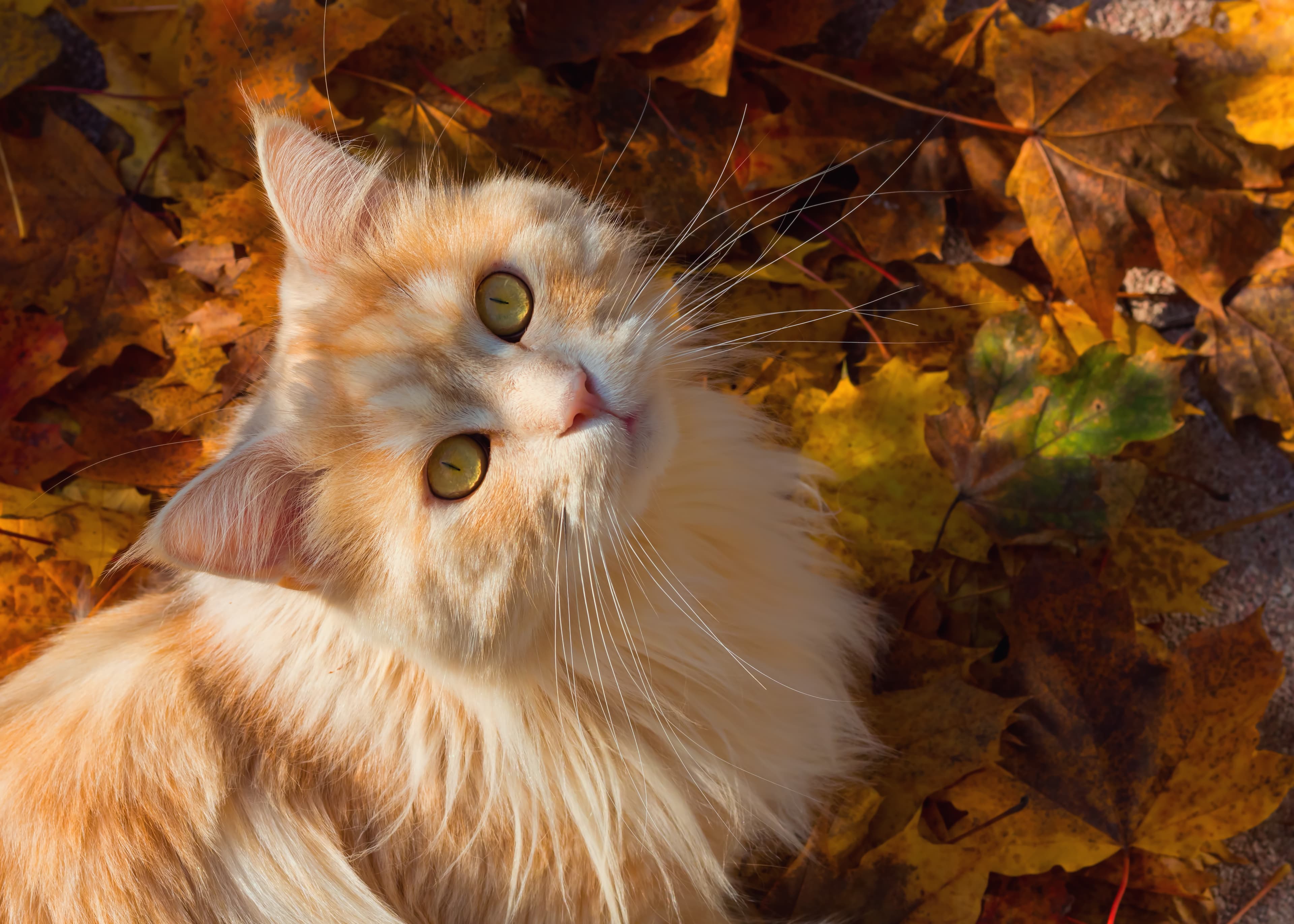Common autumn diseases in cats - recognizing and preventing
Autumn brings colorful foliage and cooler temperatures, but also new health risks for our cats. During this time of year, cats are particularly vulnerable to certain illnesses. To ensure your cat stays healthy throughout the season, it's important to recognize the most common autumn illnesses and take preventive measures. Here are the most common fall illnesses in cats and tips on how to prevent them:
Colds and Respiratory Infections
Symptoms: Sneezing, coughing, nasal discharge, lethargy
Causes: Just like humans, cats are more likely to catch colds during the colder autumn months. Outdoor cats exposed to wet fur or cold wind are especially at risk.
Prevention: Keep your cat dry after outdoor activities and make sure they have a warm place to retreat to. Reduce outdoor time during wet and cold weather, and avoid drafts inside the house. Regular vet check-ups can help detect potential health issues early.
Joint Problems, Particularly Arthritis
Symptoms: Stiff movements, reluctance to jump, visible discomfort after getting up
Causes: Colder temperatures can worsen arthritis symptoms in older cats, making their joints less flexible.
Prevention: Provide warm sleeping areas and use orthopedic beds that reduce pressure on the joints. Gentle exercise can help keep the joints flexible, and supplements like Omega-3 fatty acids can support joint health. Consult your vet for advice.
Fall Grass Mites and Parasite Infestations
Symptoms: Itching, redness, small red spots on the skin
Causes: Fall grass mites are especially active in autumn and can cause itching and skin irritations in cats. These mites attach to the fur when cats roam through grass or leaves.
Prevention: Regularly brush your cat’s fur and check the paws and belly for signs of mites. Discuss appropriate anti-parasite treatments with your vet to protect your cat from fall grass mites.
Digestive Problems from Fall Treats
Symptoms: Vomiting, diarrhea, loss of appetite
Causes: Cats are curious creatures and may occasionally eat things they shouldn't. Fallen fruit, mushrooms, or even poisonous plants like ivy can cause digestive issues.
Prevention: Ensure your cat doesn’t wander outdoors unsupervised and eats unfamiliar items. Keep them away from toxic plants and offer only cat-appropriate food.
Ear and Skin Infections
Symptoms: Constant scratching, head shaking, red or smelly ears
Causes: Moist and cold weather can promote the growth of fungi and bacteria, leading to ear or skin infections, especially in cats with folded ears or dense fur.
Prevention: Keep your cat’s ears and fur clean and dry. After spending time outdoors in damp weather, check and clean the ears if necessary. If you notice any signs of infection, consult your vet.
Be Well-Prepared for Autumn
Autumn presents new challenges for our cats, but with the right precautions, you can ensure your cat stays healthy and happy. Regular vet visits, targeted care, and keeping an eye on potential symptoms are crucial. By recognizing the most common autumn illnesses early and taking preventive measures, your cat will make it through the colder months in good health.
Lassie Tip: Pet insurance helps cover veterinary costs, giving you peace of mind that your cat will always receive the best care—no matter what autumn brings!






